We use cookies to make your experience better. To comply with the new e-Privacy directive, we need to ask for your consent to set the cookies. Learn more.
An Explanation of VCAs
A Voltage Controlled Amplifier (VCA) in a modular synthesizer is used to control the amplitude, or loudness, of an audio signal. It works by accepting a control voltage (CV) input, which is used to control the gain (amplification) of the audio signal. The output of the VCA is the amplified audio signal.
Linear and logarithmic responses refer to the way in which the VCA responds to the control voltage. A linear response means that the gain of the audio signal increases or decreases at a constant rate as the control voltage increases or decreases. A logarithmic response means that the gain of the audio signal increases or decreases at a non-constant rate as the control voltage increases or decreases. Logarithmic responses are often used in VCAs because they mimic the way the human ear perceives loudness changes.
Several types of VCAs can be used in a modular synthesizer, each with its own unique features and characteristics. Here are the main types of VCAs in order of their historical appearance:
- Vacuum tube VCAs: VCAs first appeared in radio transmitters and were used to limit the amplitude of broadcast signals. One of the earliest commercial examples is the Western Electric 110A, available in 1937. The Hammond Novachord, an early synthesizer from 1939, used 72 VCA circuits, one for each note as the keyboard triggered it. In the mid-1950s, GE released the 6386 vacuum tube, a high-performance vacuum tube specifically made for VCA duty in compressors. The 6386 was used in the famous Fairchild 670 compressor. Tube VCA Eurorack modules are based on this nearly century-old technology, which still sounds great.
- Discrete VCAs: These VCAs use individual transistors or operational amplifiers to control the gain of the audio signal. They are known for their warm and rich sound and are often used in vintage synthesizers beginning in the 1960s. However, they are generally noisier, less precise, more prone to changing their performance with temperature changes, and usually have more CV feedthrough. The Minimoog, ARP 2600, and Korg MS-20 are a few examples of synthesizers that use a discrete VCA
- OTA VCAs: OTAs are a special type of operational amplifier that can be used as a VCA. OTA-based VCAs have a higher noise floor than most modern IC-based VCAs but have a vintage charm, more like discrete VCAs. The CA3080 came out in the early 1970s and was used in many old synths, like the Oberheim SEM and OB-X. The CA3080 has been reissued, but the modern LM13700 and NE5517 are similar and can be substituted in most applications with better performance.
- IC VCAs: Integrated circuit VCAs came out shortly after OTAs in the 1970s, and made their way into synthesizers in the late 1970s to early 1980s after being used in professional audio equipment like compressors and consoles with automation. They are known for their low noise and high precision and are still used in modern analog synthesizers. The CEM3360 is a classic synthesizer dual VCA chip that can be switched between linear and logarithmic responses. It was used in the Moog Memorymoog, Roland Jupiter 6, Oberheim OB-8 and Oberheim OB-Xa to name a few. The SSM2164 is a more modern quad VCA that is logarithmic only. The SSM2164 was used in countless professional audio consoles with VCA groups and is used in many modern synthesizers and Eurorack modules.
In conclusion, choosing a VCA does not have to be that technical. Choosing one with a suitable layout and features is more important than what is happening behind the front panel. But, if you like to geek out on electronics, you may enjoy the nuanced differences between the different types of VCAs.
